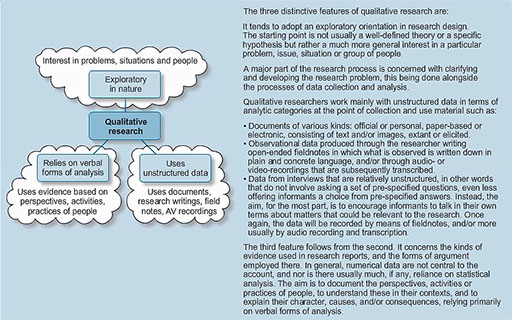1 What is qualitative research?
While it has become common to distinguish between qualitative and quantitative approaches, some researchers argue the need for combining these two types of method, and there are those who challenge the distinction itself. For example, they argue that it obscures both the considerable diversity that exists under each heading and also important overlaps. These are certainly vital points to be aware of, but the distinction between qualitative and quantitative approaches nevertheless points to some significant differences in orientation among social researchers.
It is important to identify the key features of a qualitative approach. The points in the following video give you an initial idea of the three distinctive features of qualitative research.
If you are finding the text in the video too small to read, you can see the full text in the video transcript.

Transcript
There is some truth in that qualitative and quantitative research are each suitable for answering different types of questions. For instance, if we are interested in capturing the systematic component of risk for securities held by ordinary investors, then we must necessarily engage in quantitative investigation. By contrast, if we were asked to provide an account of how ordinary investors perceive of risk then qualitative research is the best approach. However, much qualitative and quantitative research is actually concerned with answering similar sorts of questions. In such cases, the adoption of one approach rather than the other usually stems from what the researcher believes to be necessary in order to produce an adequate answer, and/or from the nature of the data that are likely to be available.
